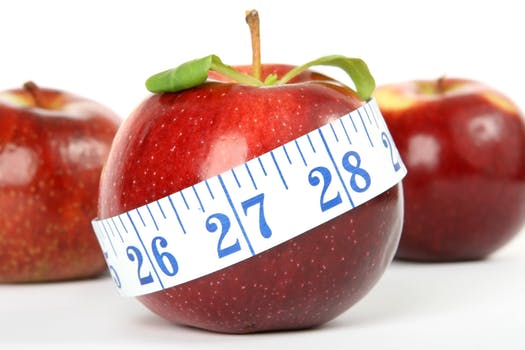Posted: Sep 10, 2018

Here's the skinny!
If you feel like just about every food has a low-calorie version these days — you’re not wrong. From ice cream to, yup, even wine, the never-ending struggle for a small waistline apparently also means not enjoying our favorite treats without a little guilt.
While I do enjoy some of the low-calorie ice creams on the market (shout out to Halo Top’s pancakes-and-waffles flavor!), I am a huge skeptic of low-calorie wine. I mean, can’t I just enjoy a glass once in a while? Does everything have to be “good for you?” And isn’t wine already a pretty low-cal way to get drunk anyway?
As much as I distrust the idea of “healthy” wine, when I was offered the chance to taste test some low-calorie wines how could I say no? So, with zero expectations, I called three friends, grabbed three different bottles and we got to work.
My willing tasters and I just so happened to be in Michigan’s wine country for my friend’s 30th birthday, so I will preface this by saying we may or may not have already enjoyed some wine by the time we got around to our test. And yes, it was full-fledged all-calorie delicious wine.
The three low-calorie wines we tested came from Brancott Estates, FitVine and Skinnygirl. So, let’s see how they treated us.
Taste Test 1: Brancott Estate
First up was Brancrott Estate’s Flight Song Marlborough Sauvignon Blanc. This pick is naturally 20-percent lighter in calories than the other wines in the Brancott Estate family, due to the winemakers selecting and harvesting the grapes earlier than usual, when their sugar levels are lower.
The four of us all agreed it tasted more like a mixed drink than wine, but one friend chose it as her favorite of the three. While it was by no means terrible, if you’re looking for wine flavor, we just didn’t get it.
Coming in at 89 calories per 5-ounce serving, is the taste sacrifice worth a 20-percent calorie savings? Nah. Not to mention, the alcohol content is pretty low at only 9 percent, which may lead to drinking more and defeating the whole lower calorie thing. A bottle retails for $13.99.
Taste Test 2: FitVine
Next up was FitVine chardonnay, which maintains a more standard alcohol content of 12.4-13.9 percent. The calories are also listed on the bottle, which, if you’re willing to drink low-calorie wine, you’d probably appreciate. A 5-ounce serving of FitVine’s chardonnay is 115 calories with 0.04 grams of sugar — the low sugar content made possible by the company’s fermentation process, which ferments to dry.
So, how’s it taste? Pretty much like all other chardonnays! It was quite dry, but with such a low sugar content, that is to be expected. Out of the three we tested, we all agreed FitVine tasted the most like full-bodied wine.
Worth it? I’m still not sure I would bother choosing a wine based on its calorie count, but I would drink FitVine chardonnay again simply because I liked it … and because the company’s slogan — “We crush grapes. You crush life.” — makes me want it anyway. A bottle costs around $15.
Taste Test 3: Skinnygirl
Last up was Skinnygirl’s pinot grigio, which comes in at 100 calories per 5-ounce pour. Calories are listed on the bottle for this one too, which seems like it should be standard for anything advertising its calorie content, yes?
Out of the three, we found this to be the smoothest and it took the top spot for three of us, though FitVine wasn’t far behind. Worth buying? Sure! But just because it tastes good. Honestly, at 100 calories a glass, you’re not saving enough by drinking it if you don’t really like it. A bottle costs about $16.
Is Low-Calorie Wine Worth It?
If you enjoy low-calorie wines, then I say drink up! If you’re drinking them when you really would rather have something else, however, should you really bother?
According to Frank Schieber, a professor at the University of South Dakota, the typical amount of sugar in a dry white wine is 0.1-0.2 percent. Calories? According to The Telegraph, a little less than 5 ounces of dry white wine will have around 85 calories, medium dry will have around 95 calories and sweet wine will have about 120 calories. Of course, these are just examples and some wines — especially sweeter ones, with more sugar — will have more calories.
Though all three wines we tested are decently priced, it comes down to whether you feel it’s worth paying $15 or more when other wines have a few more calories and are cheaper? If you truly believe saving 20 or 30 calories in a glass of wine is worth the price, then go for it.
If you ask me, wine is a treat that’s meant to be something you indulge in, so worrying about a few calories seems to kind of defeat the purpose of having a glass of wine after a long day. Sometimes, things are just meant to be enjoyed!
What’s been your experience with low-calorie wine?
By Kaitlin Gates
September 10, 2018
Source: Simplemost.com
Go-Wine's mission is to organize food and beverage information and make it universally accessible and beneficial. These are the benefits of sharing your article in Go-Wine.com


The Wine Thief Bistro & Specialty Wines is a locally owned small business in downtown Frankfort, IL offering world class wines in a relaxed, casual gathering spot for friends and family. Offering world class virtual tastings and touchless carryout.
https://www.twtwineclub.com/aboutus
Go-Wine 25 Great Wineries in US selection prioritizes quality, value and availability.
www.go-wine.com/great-wineries-in-america
Tasting wine is a nice experience, but visiting the places in which wine is made is a magic moment. Available in New York City for touchless pickup.